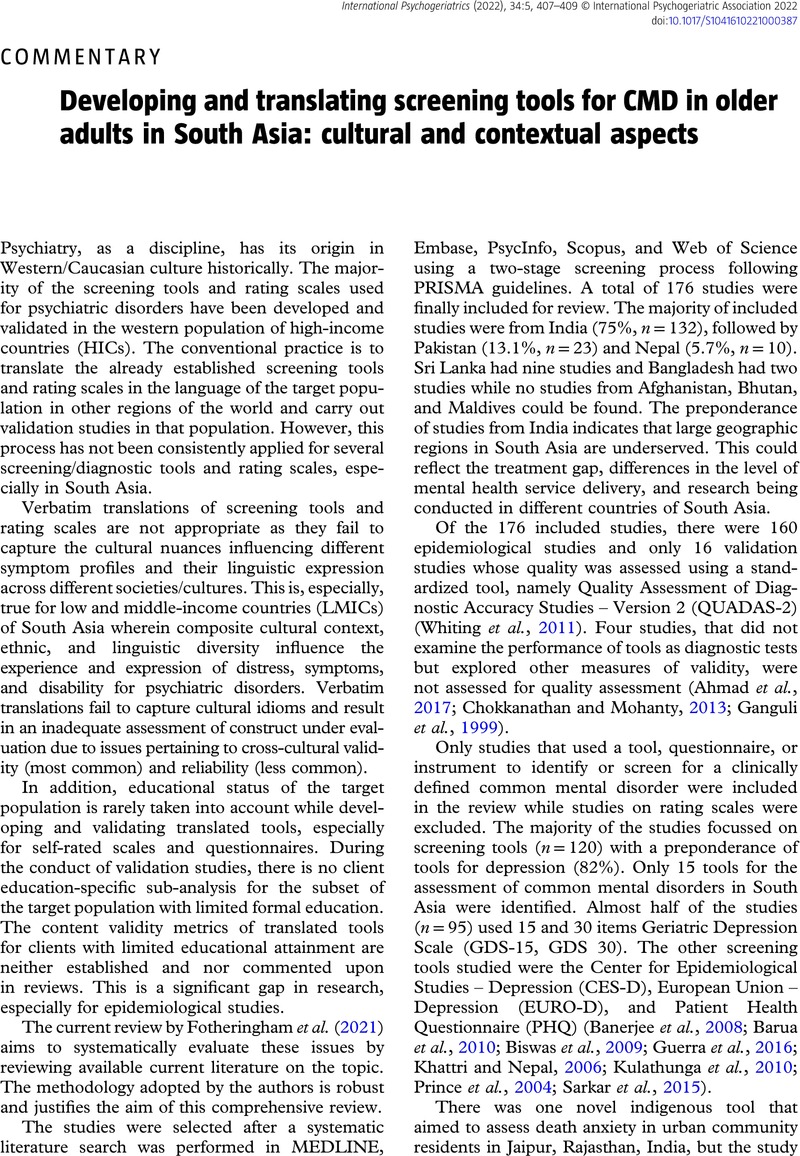Crossref Citations
This article has been cited by the following publications. This list is generated based on data provided by Crossref.
Gyimah, Leveana
Agyepong, Irene Akua
Owiredu, David
Awini, Elizabeth
Yevoo, Linda Lucy
Ashinyo, Mary Eyram
Aye, Sorre Grace Emmanuelle Victoire
Abbas, Shazra
Cronin de Chavez, Anna
Mirzoev, Tolib
and
Danso-Appiah, Anthony
2024.
Tools for screening maternal mental health conditions in primary care settings in sub-Saharan Africa: systematic review.
Frontiers in Public Health,
Vol. 12,
Issue. ,



